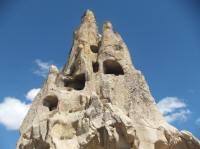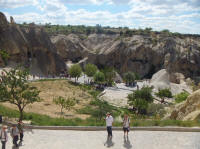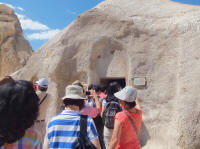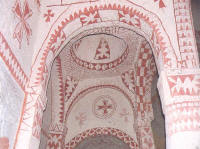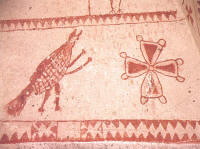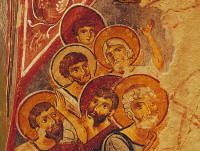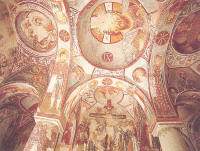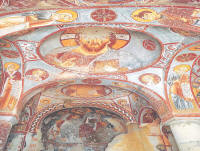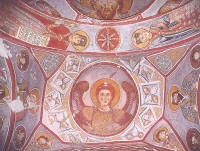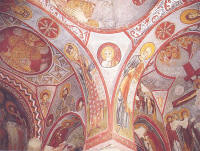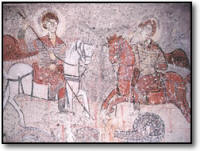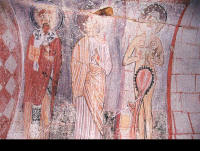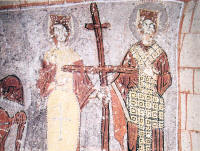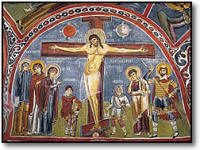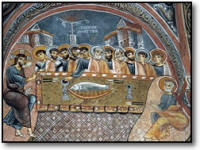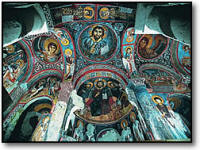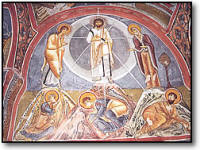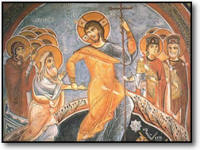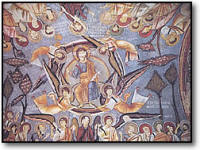
Alex Tang
Articles
- General
- Theology
- Paul
- Karl Barth
- Spiritual Formation
- Christian Education
- Spiritual Direction
- Spirituality
- Worship
- Church
- Parenting
- Medical
- Bioethics
- Books Reviews
- Videos
- Audios
- PhD dissertation
Spiritual writing
- e-Reflections
- Devotions
- The Abba Ah Beng Chronicles
- Bible Lands
- Conversations with my granddaughter
- Conversations with my grandson
- Poems
- Prayers
Nurturing/ Teaching Courses
- Sermons
- Beginning Christian Life Studies
- The Apostles' Creed
- Child Health and Nutrition
- Biomedical Ethics
- Spiritual Direction
- Spiritual Formation
- Spiritual formation communities
- Retreats
Engaging Culture
- Bioethics
- Glocalisation
- Books and Reading
- A Writing Life
- Star Trek
- Science Fiction
- Comics
- Movies
- Gaming
- Photography
- The End is Near
My Notebook
My blogs
- Spiritual Formation on the Run
- Random Musings from a Doctor's Chair
- Random Sermons from a Doctor's Chair
- Random Writings from a Doctor's Chair
- Random Spirituality from a Doctor's Chair
Books Recommendation
---------------------
Medical Students /Paediatric notes
Gerome Cave Churches, Cappadocia
In the 4th century small anchorite communities began to form in the region, acting on instruction of Saint Basil of Caesarea. They carved cells in the soft rock. During the iconoclastic period (725-842) the decoration of the many sanctuaries in the region was held to a minimum, usually symbols such as the depiction of the cross. After this period, new churches were dug into the rocks and they were richly decorated with colourful frescoes.
The Goreme Open Air Museum has been a member of UNESCO World Heritage List since 1984, and was one of the first two UNESCO sites in Turkey. The area covered by this Open Air Museum forms a coherent geographical entity and represents historical unity. There are eleven churches within the Museum, with rock-cut churches tables and benches. Most of the churches in Goreme Open Air Museum belong to the 10th, 11th and 12th centuries.
Azize Barbara Kilisesi, (or the Church of Saint Barbara) Barbara was an Egyptian martyr who was imprisoned by her father in order to protect her from the influences of Christianity. Barbara nevertheless found a way to practice her faith and her father tortured and killed her. Built in the late 11th Century, the church was possibly built as a tribute to the Martyr-Saint. The church has the same layout as Çarikli Kilise. The church has a cross-dome with one central apse, two side apses and two columns. The dome depicts Christ on the Throne, with geometrical patterns painted in red ochre, painted directly on the rock, believed to be symbolic in nature. Another fresco with the large locust possibly representing evil, which is warded off by the protection of two adjacent crosses. The north wall of the church contains a fresco of St. George and St Theodore on horse-back struggling against the dragon and snake. The monks drew red ochre lines on the rocks, to give the impression that cut stones were used in the construction (source: Wiki).
Elmalı Kilise (or the Apple Church) a smaller cave church. Was built around 1050 and has carved into four irregular pillars the sign of a Greek cross with these pillars support its central dome. Restoration on the church was completed in 1991, but the frescoes continue to chip off, revealing a layer of earlier paintings underneath. The church's paintings depict scenes of the saints, bishops, and martyrs. and to the right of the altar, a Last Supper with the symbolic fish (the letters of the word fish in Greek, ΙΧΘΥΣ, stand for "Jesus Christ, Son of God, the Savior"). The name of the church is believed to refer to a reddish orb in the left hand of the Archangel Michael in the dome of the main apse, or possibly to an apple tree that grew in the vicinity (source: Wiki).
This church, featuring four columns, nine domes and three apses, is of the closed cruciform type. Access to the church is through a tunnel on the north side. The original entrance was on the south side. The original decorations in this church consist of geometrical designs and crosses painted in red ochre directly onto the rock This technique is also found in the chapels of St.Barbara and St. Basil. The church has been dated back to the mid 11th century and the beginning of the 12th century. 15 scenes are seen in the church about Jesus's life. Three of them are of his childhood, 2 of them are of his adult life and the other io are of his suffering periods. In the central dome there is a figure of Jesus Pantokrator. The other seven domes carry the figures of the main angels. Due to the damage of the paintings on the walls, the restoration and reconstruction are being done by the Management of Reconstruction and the Restoration Society of Istanbul and directed by the restoration expert Revza Ozil. Scenes: Deesis, Nativity, Adoration of the Magi, Baptism, Raising of Lazarus, Transfiguration, Entry into Jerusalem, Last Supper, Betrayal of Judas, Way of the Cross, Crucifixion, Entombment, Anastasis, Women at the Tomb, Ascension and portraits of the saints. There are also scenes from the Old Testament (Pentateuch) such as the Hospitality of Abraham and Three Young Men in the Fiery Furnace (source: Gerome.org).
|
|
|
|
|
|
Yılanlı Kilise (the Snake Church) is a simple barrel-vaulted church with a low ceiling and long nave. It is named for the frescoe of Saints Theodore and St George slaying the dragon (or snake as depicted in the frescoe). The church also has a frescoe of Emperor Constantine and his mother Saint Helena depicted holding the True Cross. Legend has it that she discovered the cross upon which Jesus was crucified after seeing it in a dream, and that a piece of the cross is still buried in the foundations of the Hagia Sophia in Istanbul. Other sections of the cross are in the Church of the Holy Sepulchre and in St. Peter's in Rome. Another interesting portrait is the one of Saint Onuphrius on the upper wall to the right of the entrance. The saint lived the life of a hermit in the Egyptian desert near Thebes, Egypt and is usually depicted with a long gray beard and wearing only a fig leaf (source: Wiki).
|
|
|
Karanlık Kilise (or the Dark Church) was a monastic compound built in the 11th century. It is a domed church with one main apse, two small apses and four columns. It was decorated with scenes from the New Testament: Christ Pantocrator, Nativity, Adoration of the Magi, First Bath, Last Supper, Betrayal of Judas, Crucifixion, Anastasis. After the Turkish invasion it was used as a pigeon house until 1950s. After 14 years of scraping pigeon droppings off the walls, these newly restored frescoes, depicting scenes from the New Testament, are the best preserved in all of Cappadocia and a fine example of 11th-century Byzantine art. Part of the narthex or vestibule however collapsed opening part of the church's roof to the sky. This caused damage to the fresco with Christ’s Ascension and the Benediction of the Saints, whereas the other scenes only partially remain where the wall collapsed. The church's name possibly comes from a small oculus looking out of the narthex which only lets in a very small amount of light. This feature is what has preserved the richness of the pigments and allowed them to survive the passage of time.
Çarıklı Kilise (the Church with Sandals) the name comes from the two footprints
at the bottom of the Ascension fresco at the church's entrance (this fresco is
said to be an exact copy of the one contained at the Church of the Ascension in
Jerusalem). The church is cut into the same rock as Karanlik Kilise. The
footprints themselves, have many unconfirmable legends attached to them. The
church is carved into a cross floor plan with intersecting vaults. The church's
frescoes, which date to the 11th century, contain the four Evangelists, the
Nativity and the Crucifixion, the Baptism, the Adoration of the Magi, and other
New Testament themes (source: Wiki)
|
|
|
|
|
|
|
|
|
|
|
|
|
|
|
|
|
|
|
|
|
|
|
|
|
|
|
Just outside the museum exit on the right is the Buckle Church, the largest of the cave churches at Göreme. It can be entered with the same ticket as the main complex and should not be missed. The frescoes are also the finest in Göreme, with the richest colors and the most detail. It dates from the 10th and 11th centuries and was restored in the 1960s. The Buckle Church is comprised of four chambers, which are known as the Old Church, New Church, Paracclesion and Lower Church. The Old Church (10th century) has a single nave with a barrel vault. The frescoes give a comprehensive account of the life of Christ, from the Annunciation through the Baptism and Miracles and ending with the Passion, Resurrection and Ascension. The Transfiguration is painted over the entrance and the vault has portraits of saints. The Old Church now acts as a narthex for the New Church, which was added to the former's east side around 990-1010 AD. Its barrel-vaulted nave tells the story of Christ in deep red and blue hues. The transverse nave has frescoes of saints, scenes from the life of St. Basil, and the miracles of Christ (source: http://www.sacred-destinations.com/turkey/cappadocia-goreme-cave-churches).
31 May 2013
more on Bible Lands
